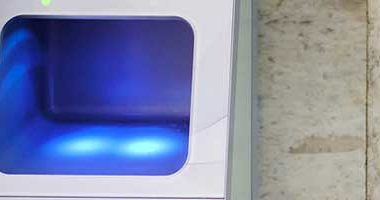Preparing a strategy to enable your business to recover from Covid-19 successfully is no mean feat. For this reason, observing the way in which other countries and industries tackle this unique problem can be useful when planning for our own futures. PWC’s Global Crisis Centre suggests that most crises require short-term reactions around mobilisation, medium-term stabilisation efforts and long-term strategies for permanent transformation.
To bounce back effectively companies therefore need to minimise disruption in the present and implement a strategy to remain competitive for the future.
The 4 steps to maintaining a competitive advantage
Navigating this uncertain period is difficult for businesses that have no example to follow. Overcoming this disruption is essential for a business to survive but more than this, to flourish, companies need to maintain a competitive advantage, particularly during this pandemic.
- Ensure business continuity by preparing for recovery.
Whilst the timeline for disruption caused by Covid-19 remains unknown, recovery is certain and so manufacturers and businesses should plan and prepare for recovery to maximise success. - Rebalance the business to facilitate a faster rebound than competitors.
This can be achieved by investing in manufacturing to drive growth for the future. Competitors may be cutting costs as a result of lower margins and so businesses that invest during this period will be at an advantage for the future. Focus on more profitable products and strengthen relationships with customers to rebuild their confidence and loyalty. - Capitalise on the “new normal” by seizing new market opportunities and competitive repositioning.
Launch products and services according to customer demand, create an inventory buffer and re-evaluate delivery models to increase flexibility and agility for the future. - Establish resilience capabilities to respond more effectively to disruption.
Invest in advanced supply chain technology for real-time visibility of all processes and digital technology such as the Internet of Things (IoT), smart products and big data to prepare for potential future disruptions. By using digital technologies companies will also be better able to understand customer behaviours and preferences.
During the Coronavirus pandemic, industrial manufacturers have offered critical support by increasing production and innovating to produce PPE and ventilator parts. In the wake of the crisis these companies should build upon that trust and seize opportunities resulting from changing markets and changes in behaviour.

How are businesses across Europe bouncing back?
As countries across Europe are starting a phased return to work, it may be useful to consider the way in which different companies mitigate the disruption caused and the steps that they take as they try to return to normality.
1. Promoting social distancing and providing PPE
All plans for a return to work should, as a minimum, encourage social distancing and ensure the provision of adequate personal protective equipment for staff. Fiat Chrysler are providing employees with two surgical masks and a new pair of gloves each day.
Social distancing can be promoted in the workplace in a number of ways. In their Zwickau plant in Germany, Volkswagen have introduced signage and markings to encourage social distancing and have closed canteens within their factories. Barriers have been installed in recreational areas within Volvo’s Torsland plant in Sweden and Airbus’s aircraft assembly plant in Hamburg are working in colour-coded shifts. Such shift patterns reduce contamination by ensuring that staff are separated and using different entrances and exits accordingly.
2. Medical checks
The businesses that will be able to bounce back quickly after Covid-19, are those that use technology most effectively. Whilst ensuring that factories and workspaces are set up to limit the possibility of transmission, by using various medical checks, companies can ensure that those entering the work place are fit and healthy enough to do so.
Some businesses, including Kia in Slovakia and Hyundai in the Czech Republic, have pitched tents outside of their factories where staff are issued with temperature tests as they arrive on site. Fiat are using thermal cameras and remote thermometers to monitor employees upon their arrival and Volvo are offering optional pulse oximeter tests to measure the amount of oxygen in the blood. Some companies are also using apps to monitor the health of staff as part of a wider testing program. Ferrari, for instance, have an internal app to inform users if they have been in contact with an infected colleague.Often optional, medical tests are not always a perfect solution but do go some way towards limiting exposure to the virus and in doing so help to reassure staff at this difficult time.

3. Reassuring staff
Essential for a successful recovery after the pandemic, companies must ensure that staff feel confident returning to the workplace. The French carmaker, Groupe PSA have opened all doors within their factory so that staff do not need to touch door handles unnecessarily. Other safety measures implemented include knee-operated sinks and button-operated machinery at Toyota and portable sinks with no-touch faucets at Ford. These simple measures may go some way to reassuring employees who are returning to work.
We need to be realistic: at the beginning, the new procedures will give rise to queries and reservations on the part of our colleagues. We have never developed, produced and sold vehicles under these conditions before … Taking the time to answer questions is more important now than daily production figures.
Bernd Osterloh, chief of VW workers’ union
Some companies have been scrutinised for being slow to act or for failing to provide adequate PPE to staff. By ensuring that protocols are properly followed staff can be reassured that risks are mitigated which, in the long term will enable the business to recover more effectively.
4. Securing the supply chain
Modern factories rely greatly on supply chains delivering parts on time. As supply chains operate internationally, a factory that may be ready to reopen in one country will most likely only be able to do so once their suppliers in other countries have returned to work as well. Continually updating suppliers on a global and regional level may be useful to ensure efficient supply chains. This is especially true in the current crisis as a company’s strategy for returning to work must also account for the availability of their suppliers.
5. Hiring additional staff
Social distancing measures such as a reduction in staff, the implementation of shift patterns and decreases in capacity will inevitably impact output. However, to flourish during these difficult times, manufacturers should invest in production to stay ahead of competitors. Recruitment is an effective way of doing this. Periods of sick leave or quarantine will also affect staffing levels if colleagues become infected and so companies should hire additional staff to maintain production. Hiring additional staff may seem counter-intuitive at a time when companies are looking to save costs however such an investment is key to ensure that production is maintained.
Planning a strategy to ensure recovery after Covid-19 will undeniably be a difficult task as there is little precedent to follow. Even during World War II, industry did not halt in the same way as it has today as factories were repurposed to support the military. For this reason, preparing to bounce back will be a difficult task but is one that can be achieved by following the protocols suggested and by working with other companies who may be able to lead by example.
We’re engaging with organisations such as the CBI (Confederation of British Industry) but if there are other organisations who are interested to learn from what we’re doing and maybe share their best practices with us, we’d be happy to co-operate and collaborate with them.
Tim Freeman, deputy managing director of Toyota Manufacturing in the UK











